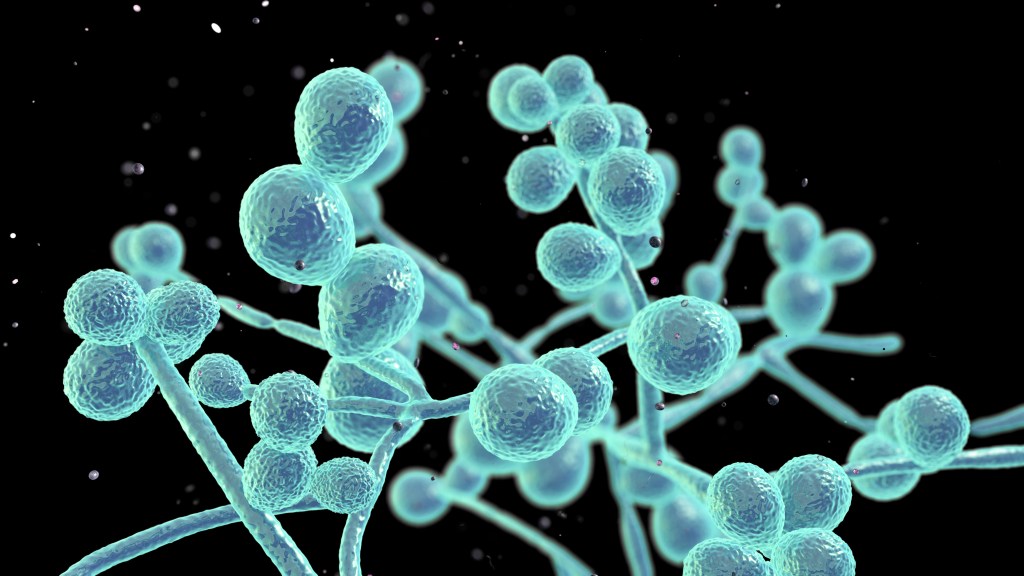Of the top four most threatening fungal species, one of them is probably already living inside you.

For the first time in history, the World Health Organisation has released a list of life-threatening fungal pathogens. And of the top four most threatening fungal species, one of them is probably already living inside you.
Invasive fungal infections are estimated to kill more than 1.5 million people every year, and one of leading causes of fungal infection is Candida albicans, which lives in around 60% of healthy adults.
Research at the School of Biotechnology and Biomolecular Sciences at the University of New South Wales is trying to discover how to prevent Candida albicans from causing disease by using bacteria that already live inside us.
“This work is really exciting because it’s a complete shift in the way we think about treating infection – we’re looking at microorganisms that have evolved together for millions of years to try and make them fight our battles for us,” says PhD candidate Bianca Briscas, who is part of the team working on the project under supervisor, Dr Megan Lenardon.

There is already evidence of people using microorganisms from healthy people to treat sick people via a faecal transplant and the approach we want to use is more targeted and has a lot of potential to help save lives and revolutionise the way we think about infections and disease, says Briscas.
The project focus is a fungus called Candida albicans which most people know as the cause of non life-threatening infections, like thrush. However, most people are unaware that this fungus can also cause serious internal disease, and the team is looking at new ways of preventing this, with collaborators based in Australia as well as in Aberdeen, Scotland.
“Candida albicans is different to other disease-causing microorganisms because it isn’t found in the environment – it lives inside the human host,” explains Briscas. “This means that an infection with Candida albicans isn’t something that you catch from someone else – you either have it, which puts you at risk, or you don’t.”
The Candida albicans already living inside a person is able to overgrow, escape the gut, and spread throughout the body through the blood. Eventually, the fungus invades major organs, causing a whole-body (or systemic) infection, which is much more serious than the superficial (external) infections most people are familiar with.
Currently, patients receive antifungal drugs, but these can have toxic side effects and resistance to some of the antifungal drugs is also becoming a problem.
“What makes things worse is that even if we give patients antifungal drugs, nearly 50% of people who get a systemic infection with Candida albicans will still die.”
Systemic Candida albicans infections affect people who are already seriously ill and immunocompromsed; for example:
- People in the intensive care unit (ICU) – including premature babies
- People with a weakened immune system (cancer patients, organ transplant recipients)
- People who have recently had surgery, especially abdominal surgery
- People who take antibiotics for a prolonged period of time
“Just recently, the World Health Organisation listed Candida albicans as a priority fungal pathogen, which shows how urgent the need for new management strategies is,” Briscas says.
The research uses a special model that mimics the human gut, to grow Candida albicans in the presence of gut bacteria from healthy humans. The goal is to try and find bacteria that are already part of the healthy human microbiota that can also kill Candida albicans, without causing the host any harm.
“If we know a patient has Candida albicans already living in their gut, we could use these bacteria to clear it before they take antibiotics, have surgery, or become immunocompromised – and get rid of Candida albicans before it ever even has a chance to become a problem.
“We spend a lot of time and money on other serious diseases, so it’s a shame to think that we can give people entirely new organs and yet they still might unfortunately die because of a fungal infection,” Briscas says.
If successful, there is potential to expand the concept to other infections caused by microorganisms that are already living in humans.
“They say that the best defence is a good offence, so why not apply that to fungal infections?” says Briscas.